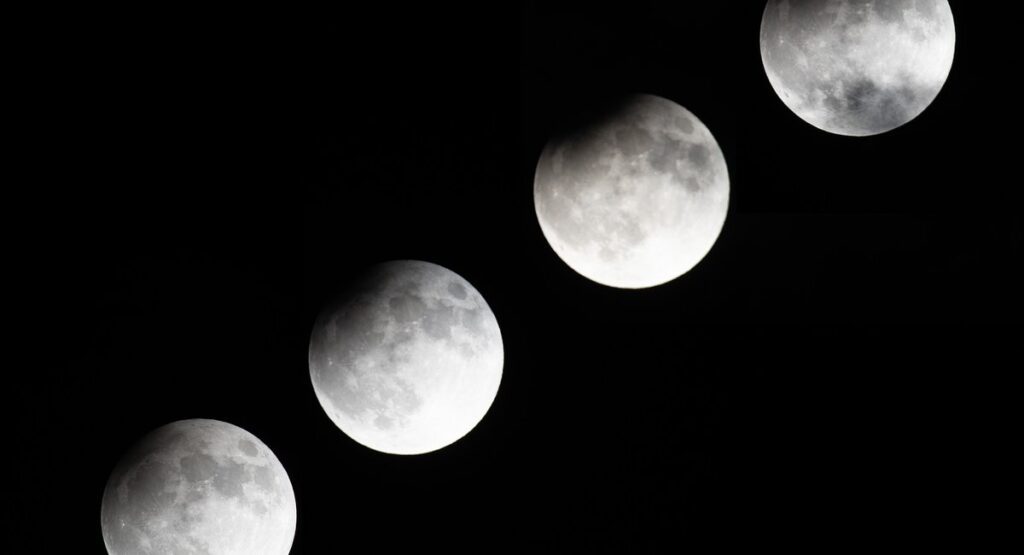March is a month of eclipses.
A full lunar eclipse will begin just before midnight on March 13, climaxing with a blood-red moon. This will be the only lunar eclipse of the year visible from New York City. And several weeks later, New Yorkers can wake up to a partial solar eclipse.
“If you wake up on the morning of March 29 and watch the sun rise, you’ll notice that the sun is rising with a little bite taken out of it because the moon will be partially eclipsing the sun for us,” said Jackie Faherty, an astrophysicist at the American Museum of Natural History.
This month also marks the spring equinox, when the night skies transition from winter to spring. Stargazers will get a final opportunity to view the planets as they fade into the distance.
“March 20 is the spring equinox, something that should always be noted so people can realize that as we are going around the sun, that is our day of equal day, equal night,” Faherty said. “It’s something to look forward to because it is the first day of spring, but also it’s an astronomical moment.”
New Yorkers haven’t had a full lunar eclipse since 2022. This year’s eclipse will begin at 11:57 p.m. on March 13 when the moon crosses into the shadow of the Earth, which blocks the moon from getting any direct light from the sun. The moon will turn blood red between 2:26 a.m. and 3:31 a.m. At about 3 a.m., the eclipse will be completely covered in the shadow of the earth. The next full lunar eclipse will be in March 2026.
”I’m going to stay up for that. It’s really magical,” said Kathy Quinn Vaccari, a member of the executive committee of the Amateur Astronomers, which runs the Sperry Observatory in Cranford, New Jersey. “It’s one of the prettiest things that you can see in the sky because not only does the eclipse show you that wonderful shadow but a lunar eclipse is the one that will give you all the color instead of just black and white.”
Lunar and solar eclipses often chase each other. On March 29, New Yorkers can enjoy their morning coffee with a partial solar eclipse during sunrise. About 30% of the sun will be missing when the eclipse reaches its maximum at 6:46 a.m. Remember: Never look directly into the sun. Use those eclipse viewing glasses from last year’s solar show.
Venus has been a very bright sight all winter, but by the end of the month, the planet will not be visible. The best time to view it is just after sunset at the beginning of the month. On March 1, the solar system’s hottest planet will appear next to the moon.
”There’s nothing as bright as Venus, except for the moon,” Vaccari said. “We’re getting a chance to look really for the last time at Venus.”
Stargazers will also have lots to look at around the moon this month. On March 5, Jupiter and the Pleiades star cluster will appear beside the moon just after sunset. On that day, the red star Aldebaran, which is often mistaken for Mars, will also appear near the moon. Mars will appear next to the moon on March 8, along with the blue-white star Castor and the golden-colored Pollux star, both part of the constellation of Gemini.
The constellation Leo heralds the spring evening skies. An easy way to spot the lion is one of its stars, Regulus, which is located at its heart, will appear next to the moon on March 11.
“ The first sign of spring, which everybody looks for, is the backward question mark of Leo the Lion,” Vaccari said.
Finally, one bit of good news for stargazers: New Yorkers — and Earthlings in general — don’t have to think about a “city-killer” asteroid annihilating their homes when looking up in the sky.
The asteroid, YR4, grabbed headlines just before Christmas when it emerged that the object, which is about 100 by 300 feet, had a 2% chance of hitting Earth in 2032.
Earlier this week, NASA scientists downgraded the asteroid’s chance of impact to nearly zero.
If it did strike New York City, the resulting collision would evaporate windows, explode buildings and cause a sonic boom.
“Luckily, Asteroid 2024 YR4 is now just entering the history books,” Faherty said. “It had its 15 minutes of fame.”
But the moon isn’t as lucky. NASA released a statement that there is about a 2% chance that the asteroid could hit the moon on Dec.22, 2032. Thankfully, the asteroid isn’t large enough to split the moon or knock it out of orbit. The impact would just produce a crater on the lunar surface.

